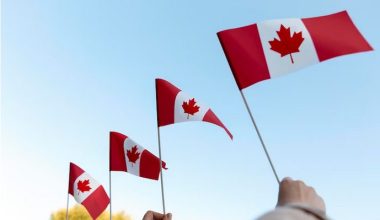In today’s article, we will be talking about the ultimate guide for Americans relocating to Canada. To make your move to Canada as smooth as possible, there are a few key things you’ll need to prepare.
1. Documentation
First, make sure you have the proper documentation in order. This includes:
- Passport – You’ll need a valid passport to enter Canada. Apply for a new passport or renew an expiring one at least 3 months before your move.
- Visa – Unless you have Canadian citizenship or permanent residency, you’ll need a visa to stay in Canada long-term. The most common types are temporary resident visas and work permits. Start the application process early as it can take time.
- Medical exam – Most immigration applications require a medical exam. Schedule yours at least 3 months before you plan to move.
2. Logistics
Next, organize the logistical details of your move:
- Hire a moving company to transport your belongings. Get estimates from different companies and book at least 1-2 months in advance.
- Make arrangements for your current home like giving notice to your landlord, having utilities disconnected, and mail forwarding set up.
- Plan how you’ll get to Canada – driving, flying, or other. Book tickets or make vehicle shipping arrangements around the same time as hiring movers.
- Research the area you’re moving to and the costs of living. Connect with others who have made a similar move. Their insights can help ensure you budget properly for this new chapter!
Finding Housing, Healthcare, and Employment
Once you’ve made the big move, it’s time to settle into your new home. Finding housing, healthcare, and a job are top priorities.
1. Housing
Renting is common for newcomers. Check rental sites like Kijiji, Craigslist, or Padmapper, and be prepared to provide references from previous landlords. Rent is often paid monthly or semi-annually in advance. Buying a home can take 3-6 months; you’ll need a sizable down payment and good credit.
2. Healthcare
Canada has universal healthcare but you must apply for provincial coverage. The application process typically takes 3 months. In the interim, you can buy private insurance. Prescription drugs, dental and vision care may have additional fees.
3. Employment
The job market is competitive. Tap into your network, use sites like Indeed, LinkedIn, and Monster, and be willing to start at a lower salary. It may take 6-18 months to find work in your field. Consider freelancing, consulting, or taking a survival job first. A Canadian resume, cover letter, and interview style are different, so do your research.
Adapting to Life in Canada: Cultural Differences and Everyday Living
Adapting to life in a new country can be challenging, but Canada’s cultural similarities with the US will help make the transition smoother for Americans. That said, there are still some key differences in everyday living you’ll want to be aware of.
1. The Metric System
Canada uses the metric system for measurements, not the imperial system common in the US. Temperatures are in Celsius, not Fahrenheit. Distances are in kilometers, not miles. Liquids are measured in liters, not gallons. You’ll need to become familiar with the conversions to navigate recipes, drive, and more.
2. Healthcare
Canada has a universal healthcare system, so you will no longer use private insurance or pay expensive medical bills. Most basic healthcare services are covered, but you may have to pay for dental, vision, and prescription drugs. The quality of care is high, but wait times to see specialists can be longer.
3. Currency
Canada’s currency is the Canadian dollar, not the US dollar. Currently, one US dollar is worth about 1.25 Canadian dollars. Prices for goods and services may seem higher in Canada at first, but when you factor in the exchange rate, they are quite comparable for most items. Be sure to exchange enough money to get you started, as most Canadian banks will not accept US cash.
4. Driving
Road signs, traffic laws, and even some terminology differ in Canada. Speed limits are in km/h, not mph. Traffic lights are horizontal, not vertical. Many common US road signs are different or missing, while new signs are used in Canada. Do some research on driving in Canada to avoid getting lost or receiving a ticket.
READ ALSO- How to Apply For a Nursing Job
Conclusion
The cultural differences between the US and Canada are relatively minor, but spending some time learning about the metric system, healthcare, currency, driving, and other nuances of daily life in Canada will help you settle in as smoothly as possible in your new home.
Wait for approval code to Appear






